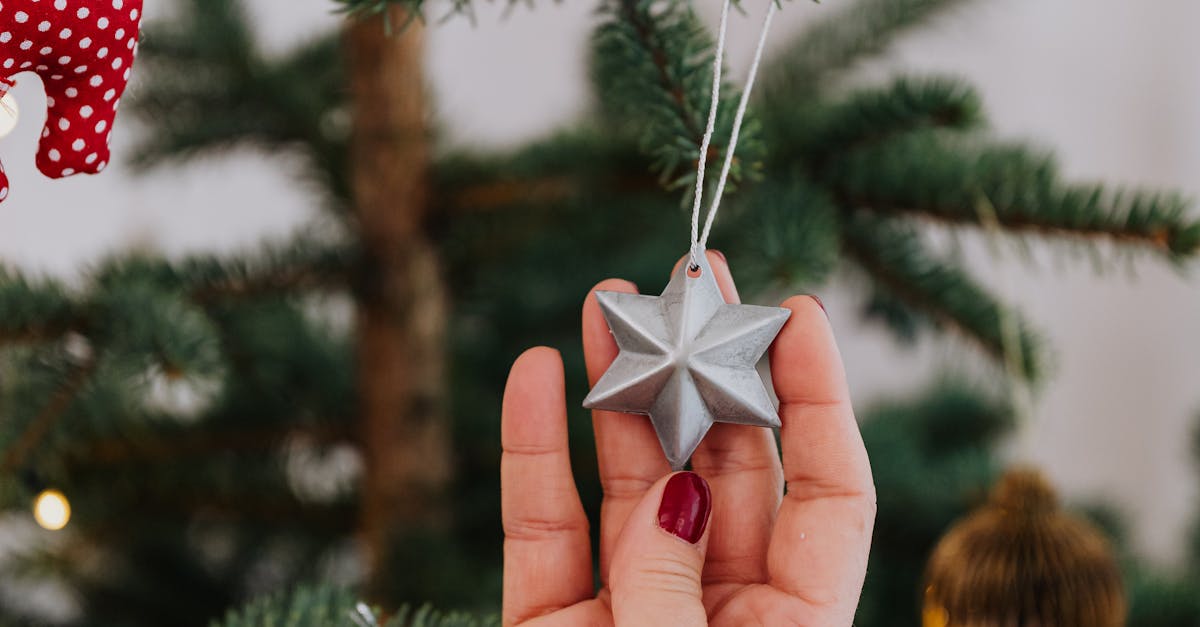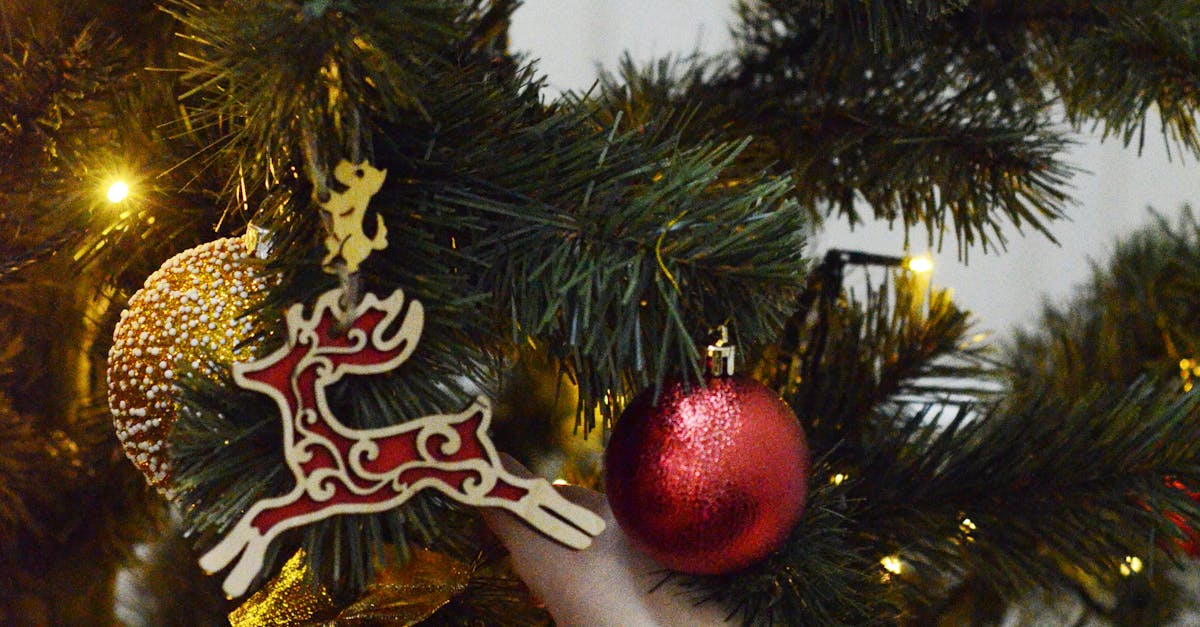
How to Choose the Right Fertilizer
Choosing the right fertilizer for trees involves understanding their specific nutrient requirements. Different species have unique needs based on their growth stage, type of soil, and environmental conditions. Conducting a soil test can reveal nutrient deficiencies and inform your choice. The results will guide the selection of fertilizers that contain appropriate ratios of nitrogen, phosphorus, and potassium, which are essential for healthy tree growth.
Tree fertilization also requires consideration of the season. Trees typically benefit from fertilization in the spring when they are preparing for new growth. Organic fertilizers can be a good option as they improve soil structure and promote a healthy ecosystem. Synthetic fertilizers may provide quick results but must be applied carefully to avoid over-fertilization, which can harm the tree and surrounding environment. Knowing what your trees need will help ensure successful fertilization practices.
Analyzing Soil and Tree Needs
Understanding the specific nutrient requirements of your trees is essential for effective tree fertilization. Different species have varied preferences for nutrients, which can change based on their stage of growth. For instance, younger trees often benefit from higher nitrogen levels to encourage vigorous growth, while mature trees may require balanced nutrients to maintain overall health. Conducting a soil analysis can provide insights into existing nutrient levels, pH balance, and organic matter content, helping to tailor the fertilization process to meet the unique needs of the trees.
Evaluating both the soil composition and the health of your trees creates a comprehensive picture for tree fertilization. Observing symptoms of nutrient deficiencies, such as yellowing leaves or stunted growth, can guide you in selecting the right fertilizer. Additionally, factors like soil drainage and moisture retention affect nutrient availability, so understanding the physical properties of your soil is equally important. Combining these insights allows for a more precise application strategy, ultimately promoting healthier trees and a thriving landscape.
Application Methods for Tree Fertilization
Effective tree fertilization can be accomplished using various application methods. One common approach is granular application, where solid fertilizer is spread around the base of the tree. This method takes advantage of rainfall or irrigation to dissolve the granules, allowing nutrients to infiltrate the soil and reach the roots. It is essential to follow the manufacturer’s instructions to avoid over-fertilizing, which can harm the tree and surrounding flora.
Another technique is liquid fertilization, which involves mixing the fertilizer in water and applying it directly to the root zone. This method provides a quick nutrient boost and is especially useful for trees that show signs of nutrient deficiency. Regardless of the method chosen, ensuring an even application around the tree is crucial for maximizing nutrient availability and promoting healthy growth during tree fertilization.
Fertilizing Techniques and Tools
Various techniques are available for effective tree fertilization, each suited for different tree sizes and types. Deep-root fertilization involves applying to the soil surrounding the root zone, ensuring nutrients reach deeper roots. This technique often uses specialized equipment like a soil injector, which creates holes in the ground and deposits fertilizer directly into the soil. For smaller trees or newly planted saplings, surface application can be beneficial, allowing nutrients to penetrate through watering or rainfall.
Different tools enhance the effectiveness of tree fertilization. Fertilizer spreaders, whether manual or motorized, ensure an even distribution of granular fertilizers, preventing over-application in specific areas. Liquid fertilizers can be applied with a handheld sprayer or a hose-end attachment, allowing for thorough coverage during watering. Choosing the right technique and tools based on the specific type and age of the tree will promote healthy growth and improve overall vitality.
Safety Precautions When Fertilizing
When engaging in tree fertilization, it is crucial to prioritize safety for both the user and the environment. Wearing protective gear, such as gloves and masks, can help prevent skin contact and inhalation of potentially harmful substances. Ensuring that children and pets are kept at a safe distance during the application process minimizes the risk of accidental exposure to fertilizers.
Environmental considerations are equally important during tree fertilization. Choosing organic or slow-release fertilizers can reduce the chances of nutrient runoff into nearby water sources. Proper timing of application also plays a role; avoiding fertilization before heavy rains can lessen pollution risks and support healthier tree growth. Taking these precautions contributes to sustainable practices, benefiting the ecosystem as a whole.
Protecting the Environment and Wildlife
When engaging in tree fertilization, it is essential to prioritize environmental safety and the preservation of local wildlife. The choice of fertilizer can significantly impact soil health and the surrounding ecosystem. Selecting organic or slow-release fertilizers may reduce the risk of nutrient runoff into nearby water bodies. This approach supports not only the trees' growth but also the overall health of the environment.
Additionally, employing careful application methods is vital to ensure that fertilizers reach their intended targets without affecting unintended areas. Utilizing techniques that minimize drift and runoff can protect local flora and fauna. Creating buffer zones around sensitive habitats will further help in safeguarding wildlife. Thoughtful practices during tree fertilization contribute to a balanced ecosystem and promote sustainability for future generations.
FAQS
What is the best type of fertilizer for trees?
The best type of fertilizer for trees typically includes a balanced ratio of nitrogen, phosphorus, and potassium (N-P-K) such as a 10-10-10 or 20-20-20 formula. However, the specific needs may vary based on tree species, age, and soil conditions.
How do I determine the nutrient needs of my trees?
You can determine the nutrient needs of your trees by conducting a soil test, which assesses the nutrient content and pH levels of the soil. Additionally, observing the tree's growth, leaf color, and overall health can provide clues to its nutritional requirements.
When is the best time to fertilize trees?
The best time to fertilize trees is usually in early spring or fall when the trees are not in active growth. This timing allows nutrients to be absorbed efficiently as the tree prepares for growth in spring or recovers after summer.
Are there organic options for fertilizing trees?
Yes, there are several organic options for fertilizing trees, including compost, well-rotted manure, fish emulsion, and bone meal. These organic fertilizers improve soil health and provide nutrients while being environmentally friendly.
What safety precautions should I take when applying fertilizer to trees?
When applying fertilizer, wear protective gear such as gloves and a mask, follow the manufacturer's instructions on dosage and application, and avoid fertilizing near water sources to prevent runoff. Always store fertilizers safely out of reach of children and pets.

